I'm trying to make simple decision tree using C5.0 in R.
data has 3 columns(including target data) and 14 rows. This is my 'jogging' data. target variable is 'CLASSIFICATION'
WEATHER JOGGED_YESTERDAY CLASSIFICATION
C N +
W Y -
Y Y -
C Y -
Y N -
W Y -
C N -
W N +
C Y -
W Y +
W N +
C N +
Y N -
W Y -
or as dput result:
structure(list(WEATHER = c("C", "W", "Y", "C", "Y", "W", "C",
"W", "C", "W", "W", "C", "Y", "W"), JOGGED_YESTERDAY = c("N",
"Y", "Y", "Y", "N", "Y", "N", "N", "Y", "Y", "N", "N", "N", "Y"
), CLASSIFICATION = c("+", "-", "-", "-", "-", "-", "-", "+",
"-", "+", "+", "+", "-", "-")), class = "data.frame", row.names = c(NA,
-14L))
jogging <- read.csv("Jogging.csv")
jogging #training data
library(C50)
jogging$CLASSIFICATION <- as.factor(jogging$CLASSIFICATION)
jogging_model <- C5.0(jogging[-3], jogging$CLASSIFICATION)
jogging_model
summary(jogging_model)
plot(jogging_model)
but it does not make any decision tree. I thought that it should have made 2 nodes(because of 2 columns except target variables) I want to know what's wrong :(
